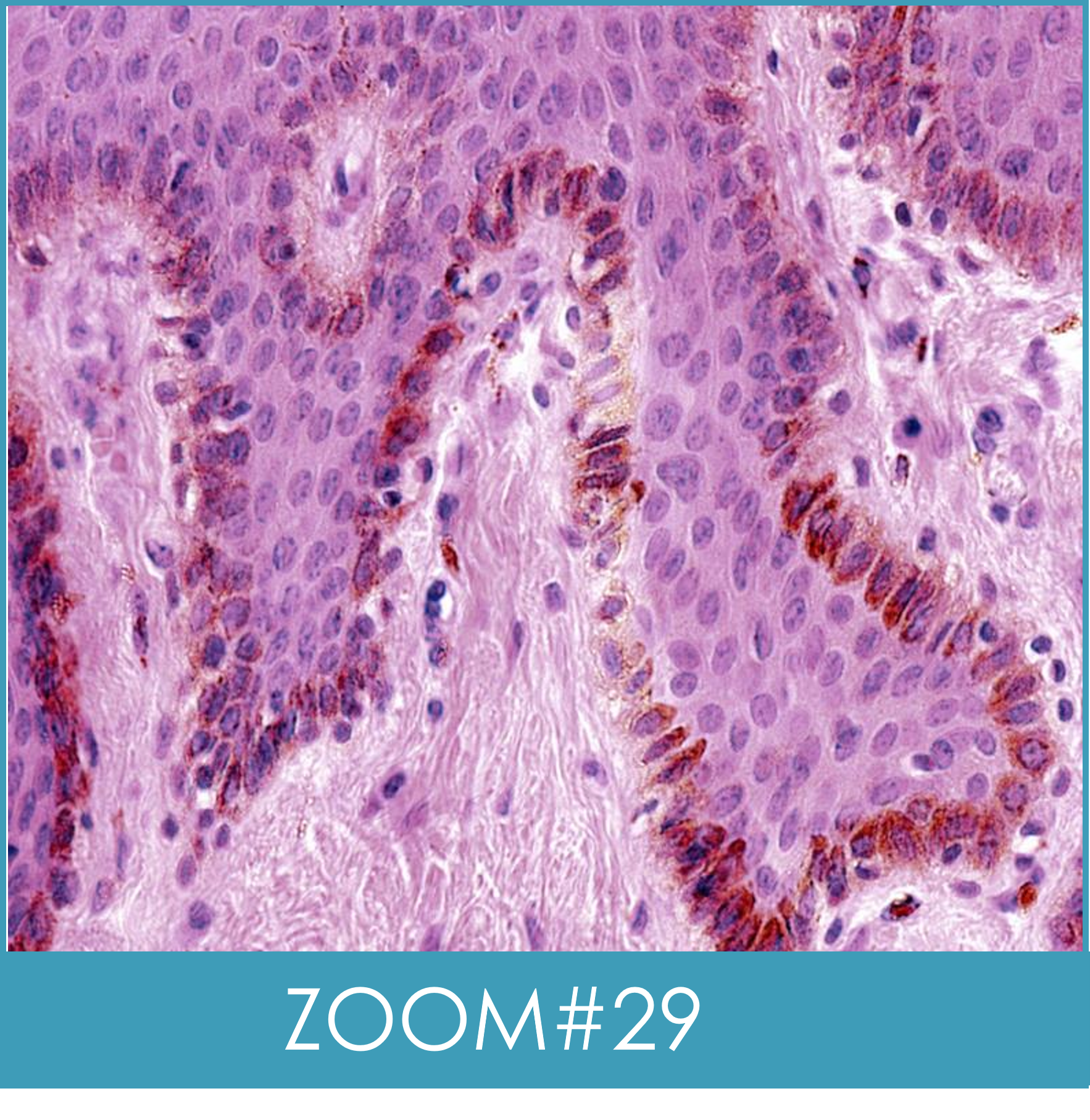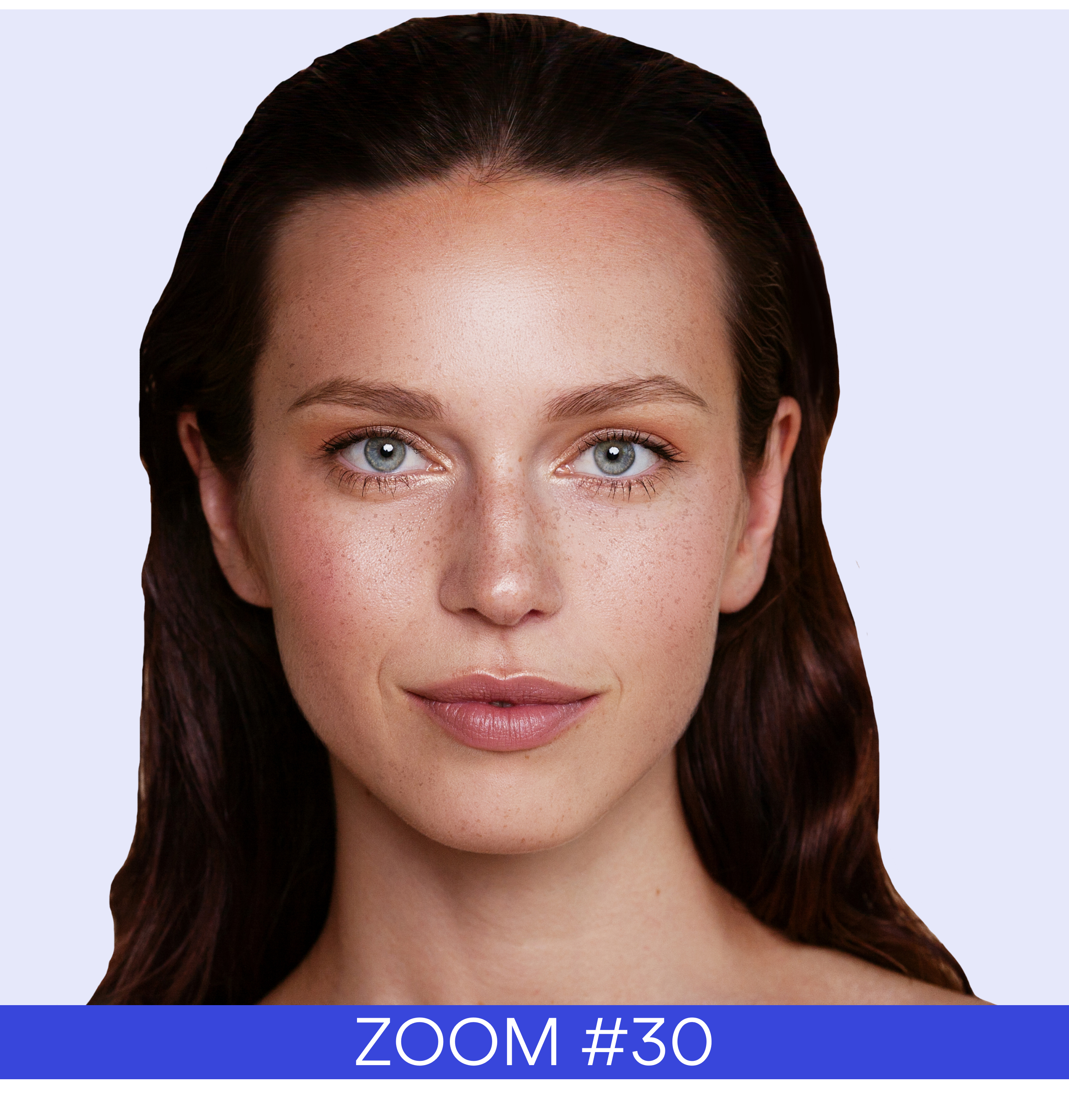Melanin and the ratio between the two types of melanic pigments -eumelanin and pheomelanin- play an essential role in skin tone evenness, in hair pigmentation and in photoprotection. The altered melanogenesis can cause various pigmentation damages (hair greying, vitiligo, etc.) and hyperpigmentation phenomena such as brown spots, melasma, acne lesions…
Human skin pigmentation is obtained by the synthesis of melanin and by its distribution in skin and in hair follicles. Human skin pigmentation is a complex process mainly managed by the melanogenesis. It is influenced by intrinsic (stress, hormone) and extrinsic factors such as UV radiation, visible light, or pollution. Melanin synthesis, also called melanogenesis, is an enzymatic process that is catalyzed mainly by tyrosinase, tyrosinase-related protein 1 (TYRP1) and dopachrome tautomerase (DCT) allowing the transformation of tyrosine into melanin within melanocytes, and more particularly in melanosomes.
Melanin contained in mature melanosomes, specific organelles, is transported via a microtubule network to the melanocyte dendritic extremities, then the pigment is transferred to surrounding keratinocytes where they distribute uniformly to ensure a homogeneous pigmentation and create a photoprotection which covers the nucleus of keratinocytes.
Several biomarkers activity closely associated with cutaneous pigmentation –melanin, tyrosinase, alpha melanocyte stimulating hormone, microphthalmia transcription Factor, melanocortin 1 receptor, endothelin-1 (ED1), peroxisome proliferator-activated receptor alpha, delta, and gamma (PPAR alpha, delta, and gamma)– can be quantified using various method of analysis like proteic dosage, immunohistochemistry, gene expression or proteomics and metagenomics through in-vitro assays whether on 2D human cells (melanocytes) with the opportunity to get primary cells from various skin color donors, whether co-cultures with keratinocytes, 3D skin model printed or not including melanocytes or ex-vivo models. These assays can be conducted under UV modulation (UVA, UVB, infrared-A, visible light), and UV associations.
Recently studies have confirmed the used 3D bio printing to control the distribution of melanin-producing skin cells or melanocytes on a biomimetic tissue substrate to create human-like skin pigmentation.
The assays on melanocytes are also used to develop senescence models by repeated UVB exposure, which allow for investigating molecular mechanism underlying premature senescence and for screening potential substances displaying both anti-senescence and anti-pigmentation effects.
Moreover, other assays demonstrate the decrease of UV-induced skin pigmentation in keratinocytes and melanocytes showing intercellular communication between both cells. Studies showed not only keratinocytes can play an important role in keratinocytes-melanocytes crosstalk, but also melanocytes are able to regulate keratinocyte functions via exosome-mediated communication. The modulation of cell proliferation appears to be a key result of the exosomal communication from melanocytes to keratinocytes.
Finally, innovation in in-vitro assays related to the skin pigmentation is a challenged topic with limitless opportunities of protocol design between support, methods of analysis, biomarkers and conditions of cultures and their environment. Many things to investigate to help the Beauty industry to understand deeper the modulation of skin pigmentation and its application in the development of new generation of whitening agents.









 Follow us on Linkedin!
Follow us on Linkedin!